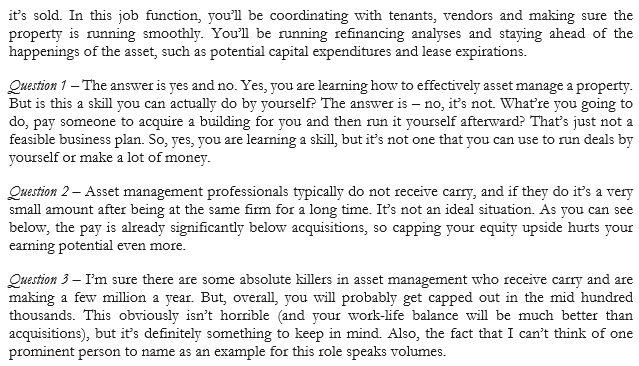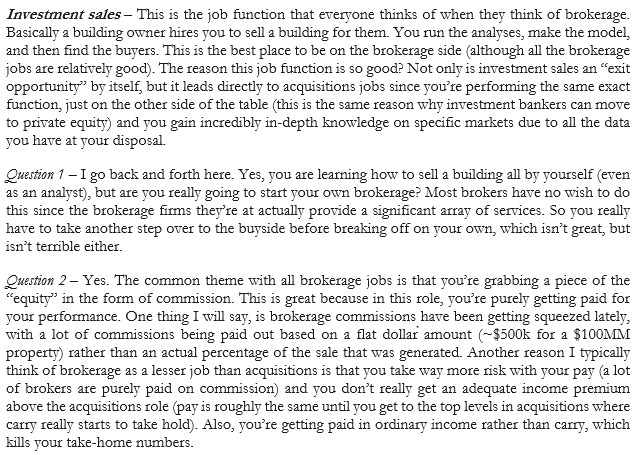
This is a common issue. When your DSCR doesn't hit the banks threshold (usually a ~1.25x DSCR), most people think banks don't give you any option but to lower the LTV. But in reality, if you negotiate, you have 3 options
Thread:
Thread:
https://twitter.com/joecassandra/status/1439229741945475074
Option 1: Lower LTV
Option 2: Schedule an earnout once 1.25x DSCR is hit at implied ~75% LTV
Option 3: Fund reserves up front to artificially hit the 1.25x DSCR
Almost everyone goes with option 1, but it's actually the worst option by far. let's go through them one by one
Option 2: Schedule an earnout once 1.25x DSCR is hit at implied ~75% LTV
Option 3: Fund reserves up front to artificially hit the 1.25x DSCR
Almost everyone goes with option 1, but it's actually the worst option by far. let's go through them one by one
For this entire thread, let's assume you want 75% leverage, but the bank is pushing you towards 60% leverage because that's the leverage that supports a 1.25x DSCR at the projected Yr 1 NOI
Option 1:
This is pretty self explanatory. The bank lowers your LTV (typically from ~75% down to ~60% or whatever LTV makes the DSCR hit 1.25x). This is the worst option by far because you have to fund far more equity up front, which creates a significant drag on your returns
This is pretty self explanatory. The bank lowers your LTV (typically from ~75% down to ~60% or whatever LTV makes the DSCR hit 1.25x). This is the worst option by far because you have to fund far more equity up front, which creates a significant drag on your returns
Option 2:
An earnout occurs once you've hit the 1.25x DSCR at whatever LTV is pre-agreed upon. So say you have to start out at 60% LTV because your DSCR is too low. Once you raise the NOI to an amount that hits a 1.25x DSCR at ~75% LTV, the remaining 15% (75%-60%) is paid out
An earnout occurs once you've hit the 1.25x DSCR at whatever LTV is pre-agreed upon. So say you have to start out at 60% LTV because your DSCR is too low. Once you raise the NOI to an amount that hits a 1.25x DSCR at ~75% LTV, the remaining 15% (75%-60%) is paid out
This is slightly more desirable than option 1 because the drag on your returns only lasts for a short period (a year or two). After that, your leverage is normalized to the level you desire (~75%), so it becomes a non-issue. But like option 1, it requires a lot of equity up front
Option 3:
This's the best option by far and the one you should be gunning for. Basically you fund whatever shortfall there is between the current DSCR and a 1.25x DSCR at 75% leverage to get the full amount of leverage. So if your Yr 1 NOI is $100k and your debt service is
This's the best option by far and the one you should be gunning for. Basically you fund whatever shortfall there is between the current DSCR and a 1.25x DSCR at 75% leverage to get the full amount of leverage. So if your Yr 1 NOI is $100k and your debt service is
$100k, you'd fund $25k to get to $125k NOI ($125k NOI/$100k debt service = 1.25x DSCR
This is the best because it requires the least amount of initial capital on your end (only 25% of the deal is equity from the get go vs the other two options that require 40% initial equity)
This is the best because it requires the least amount of initial capital on your end (only 25% of the deal is equity from the get go vs the other two options that require 40% initial equity)
and the NOI plug to get to a 1.25x DSCR is generally peanuts in relation to the total dollar amounts of the deal
So, create a strong relationship with your bank and negotiate with them. Can unlock a lot of value simply by knowing what to ask for
So, create a strong relationship with your bank and negotiate with them. Can unlock a lot of value simply by knowing what to ask for
• • •
Missing some Tweet in this thread? You can try to
force a refresh

















